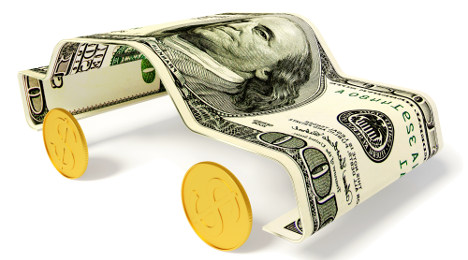Impact Transaction Prices Might Leave on Financing

By subscribing, you agree to receive communications from Auto Remarketing and our partners in accordance with our Privacy Policy. We may share your information with select partners and sponsors who may contact you about their products and services. You may unsubscribe at any time.
IRVINE, Calif. –
Perhaps a factor helping to push outstanding auto loan balances toward the $1 trillion threshold is if the transaction price activity spotted by Kelley Blue Book analysts maintains the current rate.
KBB reported on Monday that the estimated average transaction price (ATP) for light vehicles in the United States was $34,367 in December. New-vehicle prices increased by $842 (up 2.5 percent) from December of 2013, while rising $556 (1.6 percent) from November.
Kelley Blue Book senior analyst Alec Gutierrez determined this reading is the highest month on record for average transaction prices.
“If you look at the strength we’re seeing today, you have to remember that it’s not just a consumer buying a Toyota Camry LE equipped with navigation is paying 3 or 4 percent more than they were a couple of years ago,” Gutierrez said during a conference call with the media on Monday. “That’s part of it. Individual model lines and trim lines are inching up in terms of MSRP and what consumers are actually paying.
“But it also speaks to the mix,” he continued. “Trucks, CUVs, SUVs and luxury cars have done extraordinarily well. That’s really been the core driver of ATPs.”
After talking about vehicles, Gutierrez turned his attention to what finance company executive and portfolio managers might find interesting.
Subscribe to Auto Remarketing to stay informed and stay ahead.
By subscribing, you agree to receive communications from Auto Remarketing and our partners in accordance with our Privacy Policy. We may share your information with select partners and sponsors who may contact you about their products and services. You may unsubscribe at any time.
“From a lending standpoint, it’s not as though we’re seeing cars transact above MSRP or anything along those lines,” he said. In terms of lending standards, I don’t necessarily see any lenders tightening up. If we track default and repossession rates, there have been slight increases here and there in some of the lower credit tiers but for the most part, things are very stable and healthy.
“It will be interesting to see if we see that overall outstanding auto loan level pass the $1 trillion mark. It seems as though that’s a possibility,” Gutierrez continued. “As far as the implications there and what that could mean for the industry as a whole, that’s hard to say.
“You could argue there’s increased risk should industry quickly change direction. But knowing that there’s so many people that account for all of those loans, it would take something just absolutely wide spread and astronomical like we saw in 2008. That’s to say it’s not impossible to see the sort of defaults that would really impact and budge that number,” he went on to say.
“From my perspective, I don’t really see any sort of changes or significant shifts. But’s it’s definitely something to keep an eye on,” Gutierrez added.
According to the latest Equifax National Consumer Credit Trends Report, the total number of outstanding auto loans year-to-date in November came in at more than 70.0 million, the highest level in more than five years.
That amount of paper in finance company portfolios as of November pushed outstanding balances 9.6 percent higher year-over-year to $965.0 billion.
Earlier in Monday’s call, Gutierrez also touched on how interest rates and leasing trends are coupled together and what the industry might see in 2015.
“You look at one of the key drivers of industry sales — for utilities, small cars, luxury cars, you name it — is leasing,” Gutierrez said. “The last several months we’ve been tracking closer to 29 to 30 percent lease penetration rates. That’s only made possible because we have such historically low interest rates coupled with a historically high used-car market.
“When you look at the possibility that interest rates might increase this year — although we’ve heard that for the last year or two — and if the used-car market takes a bit of hit which we expect in the next couple of years with the lease activity we’ve seen, that’s where you’ll potentially see some downward pressure on sales and demand,” he continued. “With ATPs as high as they are, you lose some of those options that help offset those rising transaction prices.”


